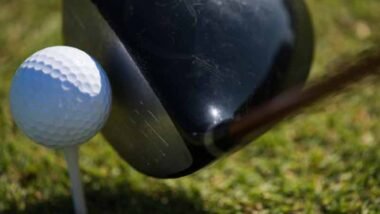Have you ever stood on the tee, feeling a rush of excitement, only to watch your golf ball slice into oblivion, and wondered if changing your grip could help you fix that slice right now?
Understanding the Slice
Before we jump into grip adjustments, let’s clarify what a slice is. A slice is when your golf ball curves dramatically to the right (for right-handed players) or to the left (for left-handed players) as it travels down the fairway. This mishap is often caused by an open clubface at impact, and while it can be frustrating, understanding it is the first step toward improvement.
Causes of a Slice
The first thing to comprehend is what causes that notorious slice in the first place. While many factors play into how your ball behaves, the predominant ones are:
- Open Clubface: An open clubface at impact is often at the root of a slice. This means that the face of the club points to the right of the target line, producing sideways spin.
- Swing Path: The direction your club is swinging through the ball can contribute to a slice. A path that comes from outside to in (over the top) generally leads to this issue.
- Grip Issues: Your grip plays a vital role in how the clubface positions at impact. A weak grip can lead to that dreaded slice.
The Importance of Grip
Your grip might seem like a small part of your golf game, but it has a substantial impact on how you strike the ball. Let’s break down the different types of grips and understand how they can influence your shot.
Types of Grips
Here are three common grips that you can utilize:
| Grip Type | Description | Benefits |
|---|---|---|
| Interlocking Grip | Involves interlocking pinky and index fingers. | Combines stability and comfort. Great for smaller hands. |
| Overlapping Grip | The pinky finger of the trailing hand rests on the index finger of the lead hand. | Offers control and is popular among professionals. |
| Ten-finger Grip | All fingers are on the club without any interlocking or overlapping. | Provides a solid hold, good for beginners or players with smaller hands. |
Choosing the Right Grip for You
The right grip for you often depends on your hand size and personal preference. Experimenting with different grips can lead you to the one that feels the most natural and provides maximum control over your shots.
How Grip Affects Slice
Now, let’s specifically address how changing your grip can directly impact that pesky slice.
Weak Grip vs. Strong Grip
Your grip’s strength can essentially tilt the clubface at impact. A weak grip often leads to an open clubface, causing the slice.
- Weak Grip: With a weak grip, your palms face more up than down. This position can lead to an open face at impact, increasing the chances of a slice.
- Strong Grip: A stronger grip involves rotating your hands more under the club. This positioning helps to close the clubface at impact, reducing the likelihood of a slice.
Illustrating Grip Positions
Here’s a simple representation of how grip strength can affect the clubface:
| Grip Type | Hand Position | Impact on Slice |
|---|---|---|
| Weak Grip | Palms tilted up | Increases likelihood of an open clubface. |
| Neutral Grip | Palms parallel to ground | Balanced; moderate chance of slicing. |
| Strong Grip | Palms tilted down | Promotes a closed clubface; reduced slice. |
Implementing a Grip Change
If you believe that your grip might be the culprit behind your slice, consider making some adjustments.
Steps to Changing Your Grip
- Assess Your Current Grip: Take a moment to check how you’re gripping the club. Are your palms facing upwards? If so, it might be time for a change.
- Experiment with Grip Types: Try out the three types of grips mentioned before. Play around with how each one feels during practice swings.
- Adjust Hand Position: If you decide to adopt a stronger grip, adjust your hand position gradually. Don’t go from weak to strong all at once; let your body adapt.
- Practice with Purpose: Once you’ve decided on a grip, take it to the driving range. Focus on making clean contact with the ball using your new grip.
Drills for Transitioning Your Grip
To help you adjust to your new grip, consider these simple drills:
- Grip Pressure Drill: Hold the club with a light grip and make swings. Gradually apply more pressure to find a comfortable balance that helps you maintain control without choking the club.
- Impact Drill: Place a club or alignment stick down on the ground pointing towards your target. Practice swinging and paying attention to your clubface at impact while making sure it isn’t open.
- Mirror Work: Stand in front of a mirror and practice your grip. This visual aid helps you become more aware of how your hands interact with the club.
Practicing Consistent Grip
Once you’ve adopted a new grip, it’s crucial to ensure consistency over your rounds.
Review Your Grip Regularly
Consistency is key in golf. Make sure to regularly check in on your grip, particularly before important rounds.
- Pre-Round Check: Before each session or round, take a few moments to reassess your grip. Are your hands positioned correctly?
- Video Your Swing: Occasionally record your swing. Watching yourself can help you identify if your grip is slipping back into old habits.
- Practice with Focus: During your practice sessions, dedicate time specifically to working on your grip to solidify the new habits.
The Role of Other Factors
While changing your grip is essential, don’t forget that it’s only one piece of the puzzle.
Other Adjustments to Consider
Aside from grip changes, consider these additional factors that can help reduce slicing:
- Stance Width: A wider stance can provide more stability in your swing.
- Posture: A good posture helps in maintaining balance throughout your swing.
- Swing Path: Work on ensuring that your swing path is more inside-out to reduce slicing tendencies.
Seeking Professional Help
If you’re still struggling even after changing your grip, you might consider seeking a lesson from a golf professional. They can provide personalized feedback that’s tailored to your unique swing mechanics.
Staying Patient
Changing your grip and improving your shot takes time, so it’s important to maintain a positive mindset.
Being Kind to Yourself
As with any change, there’s a learning curve. Be patient with yourself; don’t be discouraged by initial struggles. Remember, improvement in golf is gradual.
Celebrate Small Wins
Whenever you notice progress, like consistent contact or a decrease in slice severity, take a moment to celebrate that success. Every little step counts!
Understanding the Journey
Golf is a lifelong game, and with every swing, you gain insights into your technique.
Embracing the Experience
Your journey to perfecting your grip and fixing that slice is part of the fun. Enjoy the process of learning and adapting!
Reflecting on Your Progress
Every practice session provides opportunities for improvement. Take note of what works, and don’t hesitate to adjust as you deepen your understanding of your own swing.
Conclusion
So, can changing your grip help you fix a slice right now? Absolutely! While it might take some time and practice, altering your grip is a significant step toward gaining control over your shots. As you work on this adjustment, remember to consider other aspects of your game and stay committed to the process.
By maintaining a friendly attitude towards your practice, you’ll notice improvements not just in your grip but in your whole golf game, setting you up for more enjoyable and successful rounds ahead!
Now, it’s time to hit the practice green with this new knowledge in your back pocket. Here’s to better swings and straighter drives!







